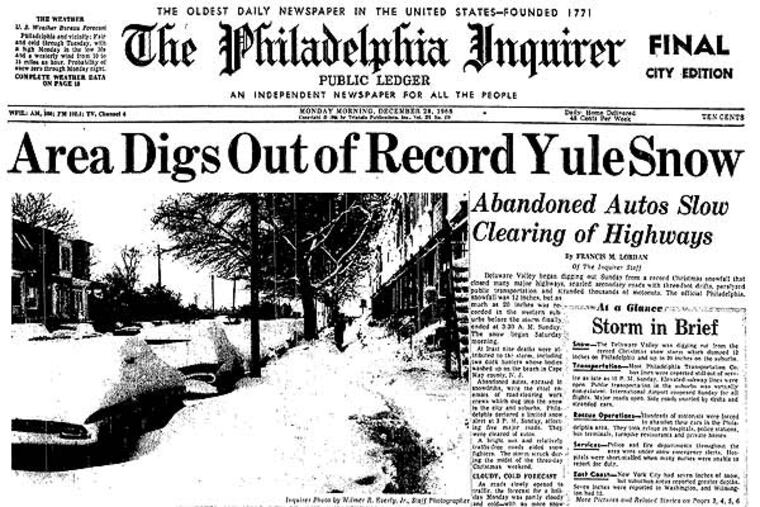Dreaming of a White Christmas? What are the chances?
By now anyone familiar with the fallibility of computer models and the humans who interpret them shouldn’t trust any forecast for a week away.

The national fascination with a White Christmas is wonderfully irrational, given that for a variety of reasons, the odds are very much against a snow cover on Dec. 25 for an overwhelming majority of Americans.
Nevertheless, around this time every year comes that evergreen question of whether we are going to have a White Christmas.
So: Are we?
By now, anyone familiar with the fallibility of computer models and the humans who interpret them shouldn’t trust any forecast for a week away.
Still, indications are that we in the Philadelphia region won’t be dashing through the snow on Dec. 25, some of the storm buzz circulating last week notwithstanding.
More likely it will be wetter than whiter; storm traffic remains frisky, but meteorologists say cold air could be stuck nearer the North Pole for a while.
“You do have an active southern storm track,” AccuWeather Inc. meteorologist Max Vido said. “The thing I’m not seeing right now is that fresh injection of cold air before Christmas.”
Snow next week isn’t out of the question, but we have a few macro issues going against us:
The Atlantic Ocean. Most major snow around here is produced by coastal storms that generate strong winds off the Atlantic. In December, sea surface temperatures are in the 40s.
Climatology. 'Tisn’t the snow season yet; that’s in January. It takes a while for the Northern Hemisphere to get the message that the sun reached a low point at the solstice.
Liquidity. In December, historically, 90 percent of precipitation that has fallen upon Philly has been rain. On average, measurable snow has fallen on a measly 0.6 days during the entire month.
Odds are against snow all along the Northeast Corridor around Christmas, according to the National Centers for Environmental Information.
And, yes, it won’t be happening in Southern California or Florida. No sledding for about 50 million people right there.
So why this obsession with a White Christmas — not a technical term, but which the government very unofficially defines as an inch or more of snow depth on Dec. 25?
Retailers have done nothing to discourage the association, but the roots of the concept are far deeper than price scanners.
The writer Washington Irving is credited with popularizing St. Nicholas to Americans in his 1809 satirical book, A History of New-York From the Beginning of the World to the End of the Dutch Dynasty, by Diedrich Knickerbocker.
Then, in 1823, came “A Visit from St. Nicholas,” more popularly known as “The Night Before Christmas,” a poem attributed to Clement Clark Moore that further cemented Irving’s image of Santa Claus with pipe, sleigh, and snow.
And you likely have seen a film or video version, but we would recommend actually reading Charles Dickens' A Christmas Carol, in which snow adds more than a dash of atmosphere.
Interestingly, and perhaps not coincidentally, Irving, Moore, and Dickens were writing during the twilight of the Little Ice Age, when Europe and eastern North America were colder than they are today.
In more modern times, of course, Irving Berlin flash-froze the concept with the song “White Christmas,” popularized by Bing Crosby, first performed in the movie Holiday Inn and later the featured song in the film of the same name.
Wisely, the song opens with “I’m dreaming” and makes no mention of potential holiday travel disruptions.
Over time, conditions have occasionally conspired to whiten the ground and rooftops for Christmas, as was the case in 1966 when a foot of snow fell from Dec. 24 into early Christmas morning.
But in all likelihood most Americans will have to settle for “dreaming” this year, as they do every year.
By the way, it probably won’t snow on the stables and inns of Bethlehem, either.